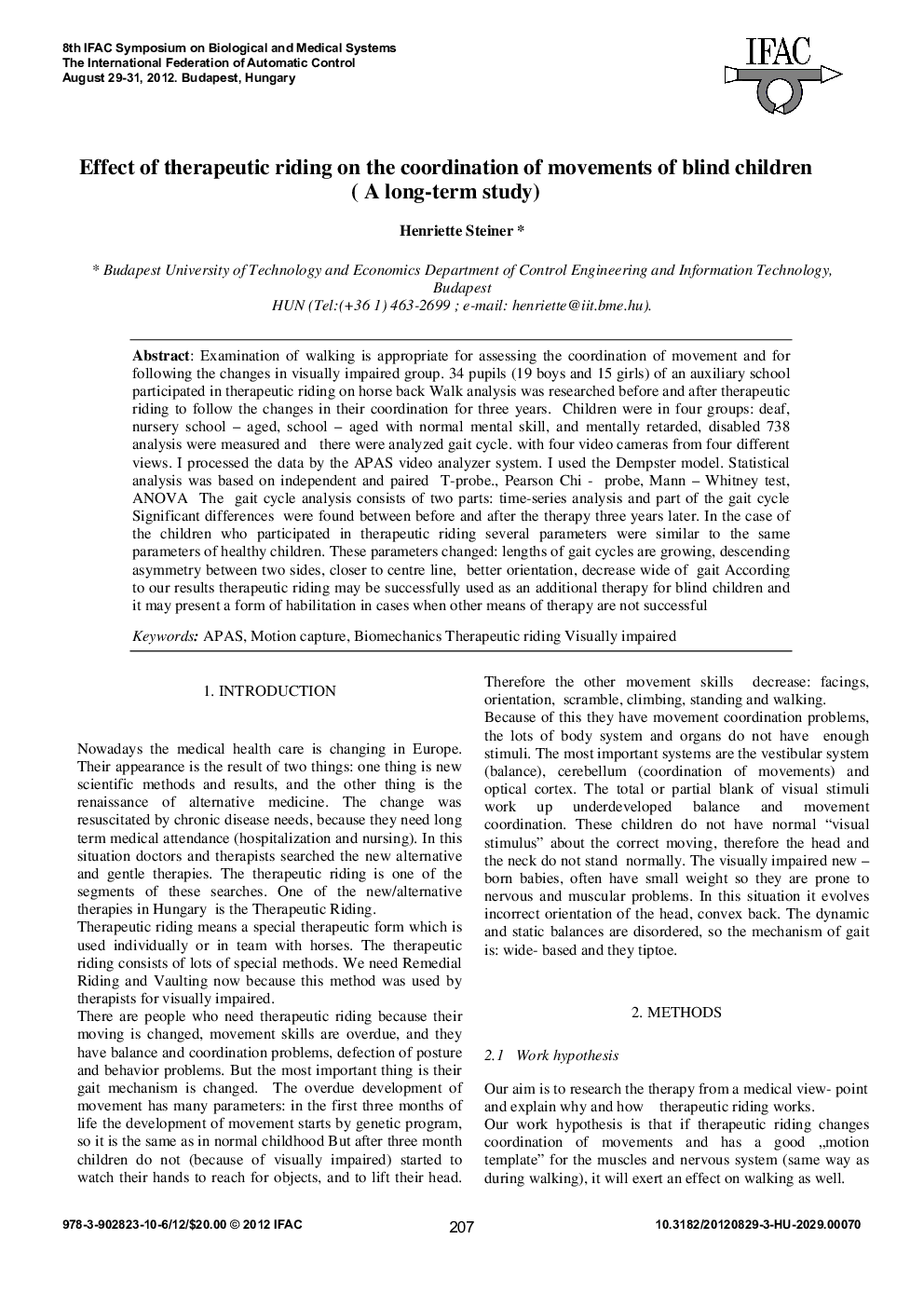| کد مقاله | کد نشریه | سال انتشار | مقاله انگلیسی | نسخه تمام متن |
|---|---|---|---|---|
| 718271 | 892257 | 2012 | 4 صفحه PDF | دانلود رایگان |

Examination of walking is appropriate for assessing the coordination of movement and for following the changes in visually impaired group. 34 pupils (19 boys and 15 girls) of an auxiliary school participated in therapeutic riding on horse back Walk analysis was researched before and after therapeutic riding to follow the changes in their coordination for three years. Children were in four groups: deaf, nursery school – aged, school – aged with normal mental skill, and mentally retarded, disabled 738 analysis were measured and there were analyzed gait cycle. with four video cameras from four different views. I processed the data by the APAS video analyzer system. I used the Dempster model. Statistical analysis was based on independent and paired T-probe., Pearson Chi - probe, Mann – Whitney test, ANOVA The gait cycle analysis consists of two parts: time-series analysis and part of the gait cycle Significant differences were found between before and after the therapy three years later. In the case of the children who participated in therapeutic riding several parameters were similar to the same parameters of healthy children. These parameters changed: lengths of gait cycles are growing, descending asymmetry between two sides, closer to centre line, better orientation, decrease wide of gait According to our results therapeutic riding may be successfully used as an additional therapy for blind children and it may present a form of habilitation in cases when other means of therapy are not successful
Journal: IFAC Proceedings Volumes - Volume 45, Issue 18, 2012, Pages 207-210